
Need for Speed: Hot Pursuit 2
Written by: Rik
Date posted: October 7, 2017
- Genre: Racing
- Developed by: Electronic Arts Canada
- Published by: Electronic Arts
- Year released: 2002
- Our score: 4
A long time ago, the previous game to carry the Hot Pursuit name, Need for Speed 3, prompted this writer to coin the term ‘road trousers’, to describe circumstances in racing games where supposed racing on real-life roads was little more than a standard lap-based affair, wearing a thin disguise. The disguise, in this case, being, er, trousers. To be honest, I think I borrowed this from a professional review I once read, of a technically impressive but ultimately shallow title that was described as less of a game and more of an engine wearing ‘gameplay trousers’. So, there we go: the semi-plagiarised origins of one of our oft-repeated phrases, that doesn’t really make any sense if you spend even a second thinking about it.
In many ways, a straight-line, point-to-point race, with no option of taking alternative routes, is as much of an artificial construct as driving round and around in circles. But early pioneers of the real-life road racing genre like Test Drive or The Need for Speed did feel like they were providing a different experience, reasonable approximations (for the time) of driving fast cars on public roads, instead of the standard lap-based affairs which tended to dominate the genre.
As much as I did like the original Hot Pursuit (from what I can remember), the increased emphasis on the police-chase element, allied to the lap-based, ‘road trousers’ format of the racing, seemed a little bit jarring. Around we go in circles, invoking the ire of the police, getting them to chase us around and around the same circuit for a defined number of laps. Instead of chasing you, they would be better off parking up, blocking the road and waiting for you to come around again.
I mention all of this because playing Hot Pursuit 2 feels like playing Road Trousers: The Game. Despite actually featuring point-to-point races, and being superficially faithful to the spirit of the series, something isn’t quite right here. Hot Pursuit was a couple of steps removed from the original The Need for Speed, and Hot Pursuit 2 continues in the same vein. Which means that while Hot Pursuit and Hot Pursuit 2 have some shared lineage, very little of what first made Need for Speed distinctive and special remains in the latter.
There have been four years between the two games, so it’s worth recapping some series history and accounting for some slightly confusing naming practices. The direct sequel to Need for Speed 3: Hot Pursuit was Need for Speed: Road Challenge (called High Stakes in the US), which I remember not liking quite as much, followed a year later by Porsche 2000 (also known as Porsche Unleashed), arguably the best NFS game up to that point. It wasn’t very commercially successful, though, and prompted EA to enter an uncharacteristic period of contemplation and restraint with regard to the series, in that they didn’t bother to release a NFS game at all in 2001.
Sensing that a return to the Hot Pursuit formula, and name, was the way to go, the franchise returned in 2002 with this title. However, it was not to be, and the following year the series underwent a reboot of sorts with Need for Speed: Underground, developed by EA Black Box, and the start of a mid-00s revival for the Need for Speed name. (Black Box did also develop the Playstation 2 version of Hot Pursuit 2, which by reputation is a superior effort to the PC and Xbox iterations, although I’ve not played it myself). To confuse matters further, the Hot Pursuit brand was dusted off again in 2010, when Burnout developers Criterion were given the keys to the franchise.
Back to this game, and as the name implies, the Hot Pursuit mode features prominently, once again providing the opportunity to drive fast while being chased relentlessly, but ineffectively, by officers of the law. There are a number of events to progress through, and in time-honoured fashion, you begin with dull, slow, cars such as the long-forgotten Vauxhall VX220, before progressing through the ranks of BMWs, Porsches and Ferraris up to the truly ludicrous supercars like the McLaren F1.
The races are a mixture of point-to-point and laps, with some variety in the number of AI opponents and the selection of available vehicles, but police and civilian traffic a constant. As before, there’s no question of being able to avoid police confrontation, and it’s only a matter of time before they engage, and then get steadily more aggressive as the race continues and your wanted level increases.
It’s a shame that a rather fun (and subtle) element of the likes of Test Drive 2 and The Need for Speed, in which you could pay attention to your scanner and slow down to actually avoid the police, has been abandoned in the name of guaranteed cop-chase hi-jinks. Without being completely humourless, the chases in a game like this raise questions about the merits of, and reasons for, engaging in a pursuit in order to apprehend a suspect for speeding and/or dangerous driving. I’d say that the point at which it is determined that dropping exploding barrels onto the road from a helicopter is the best way forward (as is the case here) is probably the time to re-evaluate. You’ll also witness cop cars smash head-on into civilian traffic, causing a multi-vehicle pile-up, before announcing over the radio to colleagues that they’re ending the chase “in the interests of public safety”.
There’s a certain level of pantomime enjoyment to proceedings, although it’s not desperately challenging and if you’re relatively competent at such things you should largely avoid bring detained (although unlike previous games, if you get caught once, it’s race over). There are off-road shortcuts, which are good for flummoxing the police, and as usual, the effectiveness of road blocks and spike strips is undermined by each covering only a narrow section of the carriageway.
One or two challenges give you the chance to play as the cop, which is also mildly diverting without ever sending you scurrying to the single race option to repeat the experience. There’s a decent slab of content here, but you can breeze through it quite quickly, and it doesn’t build to any kind of climax or give you any kind of acknowledgement for beating the final race.
And so what does that leave? The championship mode, which the manual bravely tries to talk up (“who needs cops when the racing is this intense? If you’re serious about racing, the last thing you want is a bungling cop swerving onto the track and throwing you off”) but is essentially exactly the same as Hot Pursuit without the cops, and without much going for it. There’s also the option to use the credits you earn in the two main modes to unlock cars and tracks for use in the single race mode, although it’s highly likely that you’ll have had your fill of the game by that point.
The driving simply isn’t interesting enough on its own to sustain a functional lap-based racer: spongey, nondescript handling, bumblebee engines, no traffic, and no challenge. It belongs in the same category as something like Ford Racing 2, which wasn’t a bad game, but one that at least set low expectations with its honest title, low budget and modest ambitions. Need for Speed should aspire to be much more.
There was a brief period of time in which Underground was considered a cynical rehashing and/or destruction of NFS as we knew and loved it, with some fans casting Hot Pursuit 2 as the last true NFS game. I can’t agree with that position: in fact, I don’t think any of the NFS games to that point were faithful to the spirit of the original, which itself owed a lot to the first three Test Drive games (yes, even TD3) and Car and Driver. While Test Drive 2 and The Need for Speed may have been lacking technologically, they had an ambition that was exciting. Which is why it was disappointing to find that advances in hardware sent the series off down a dull lap-based cul-de-sac (if indeed you can have a lap-based cul-de-sac, which I’m not sure you can). It wasn’t until Test Drive Unlimited that we had a game that delivered on those early promises.
Also, Hot Pursuit 2 really isn’t very good. If you’re going to go lap-based, then for goodness’ sake it has to be exciting. Whatever Underground‘s origins as a cash-in on the success of The Fast and The Furious, it did what an arcade racer should: provide an all-out assault on the senses in its presentation and plenty of thrills out on the road. Hot Pursuit 2, in contrast, is very pedestrian, very uncool, very middle-aged Top Gear fan, with the blandest white rawk music available blaring away in the background.
I mean, it’s not awful. But there’s little reason to seek it out. I’m a sucker for the somewhat greasy guilty pleasure of a tasteless, dated arcade racer, but even by those standards, this falls short. More than anything else, it provides some context for Underground, which gave the series some much-needed reinvigoration.

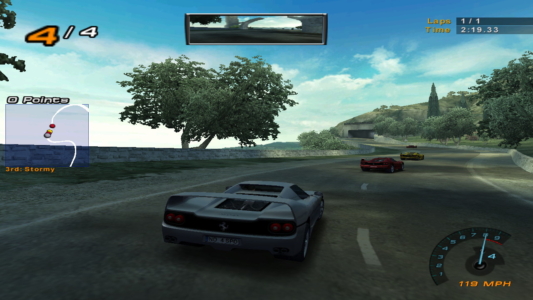
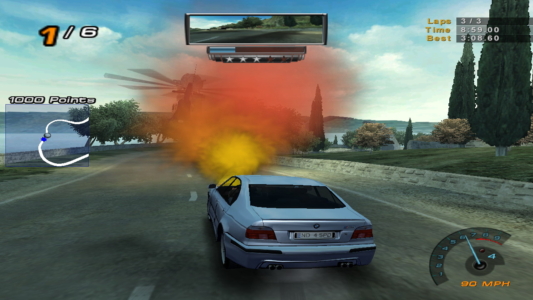
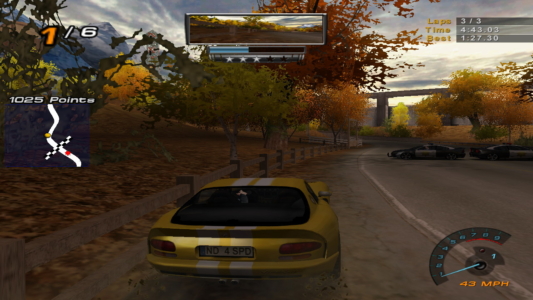
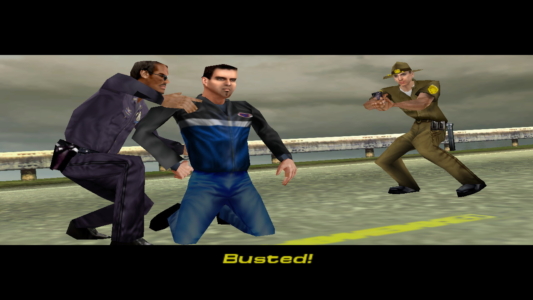
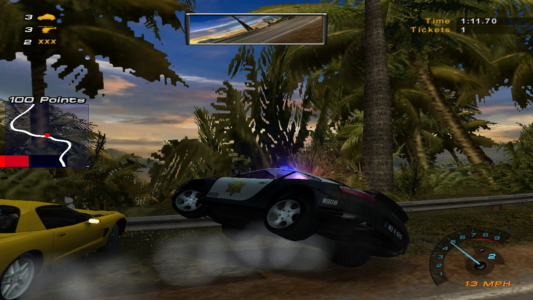

 Posts
Posts
No wonder you didn’t have much fun – you played the PC version. The real Hot Pursuit 2 was developed for the PS2 by Black Box, who went on to make the Underground games and their follow-ups. The version for other platforms isn’t even really a port, more of an inferior remake, developed by the team that had made the ’90s NFS games but was being worked to death on Motor City Online, the racing MMO that EA released in 2001 between Need for Speed installments. I had a blast with Hot Pursuit 2 on the PS2 and then went back to it years later on PC to find it less cool than I’d remembered, and then I learned the truth. The PS2 game quickly found its place as my favorite racing game ever when I went back to it, and I can confidently state that the PC (and GameCube, and Xbox) Hot Pursuit 2 is not worth bothering with.
April 23, 2025 @ 8:56 pm
“Hello” is damn right indeed, considering this visual comparison of PC and PS2 versions :
https://www.youtube.com/watch?v=1tXUtHPOepc
April 30, 2025 @ 8:34 pm